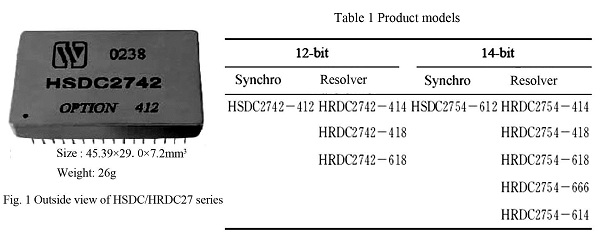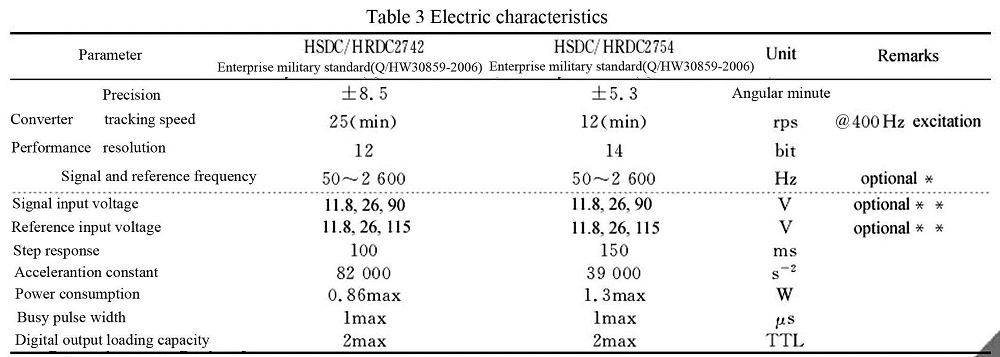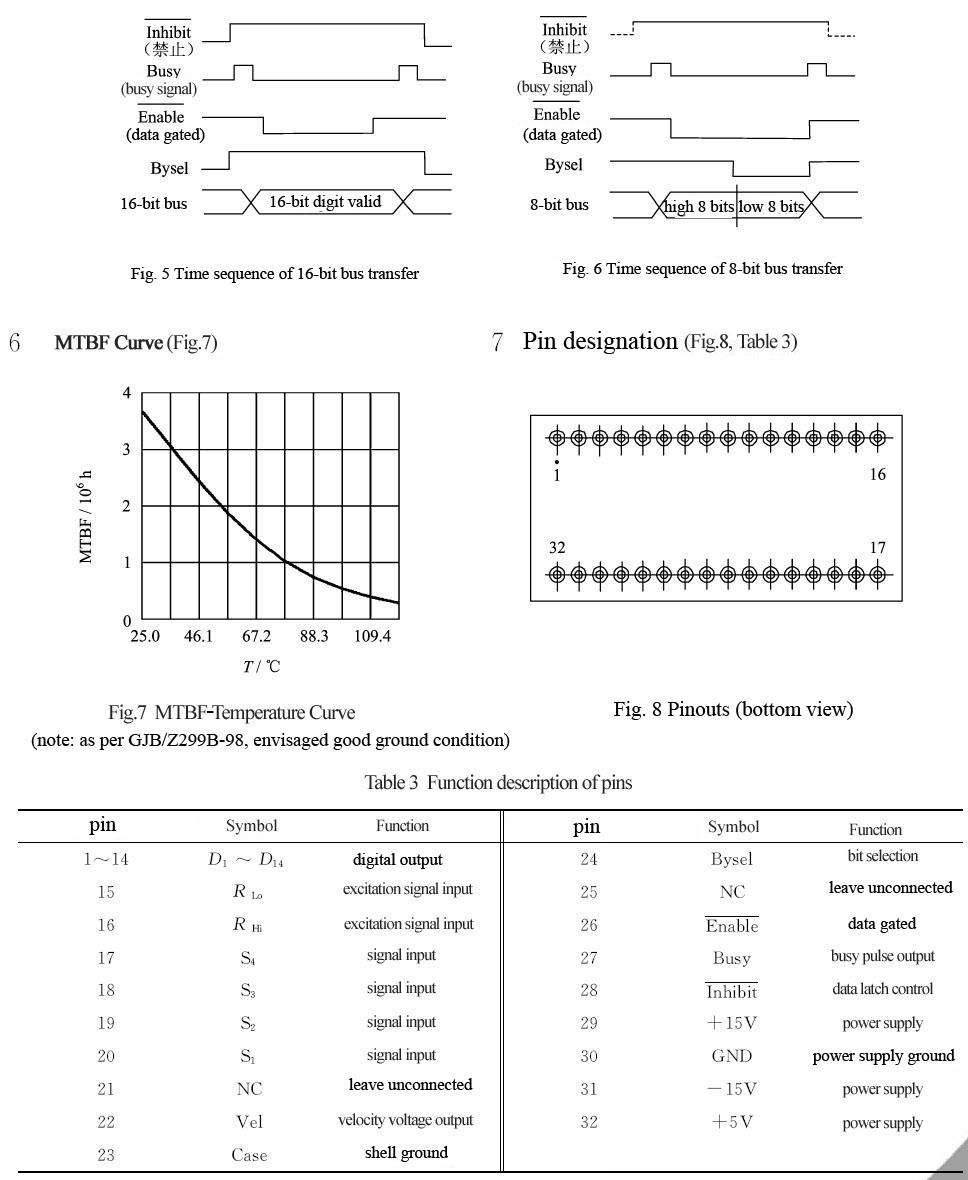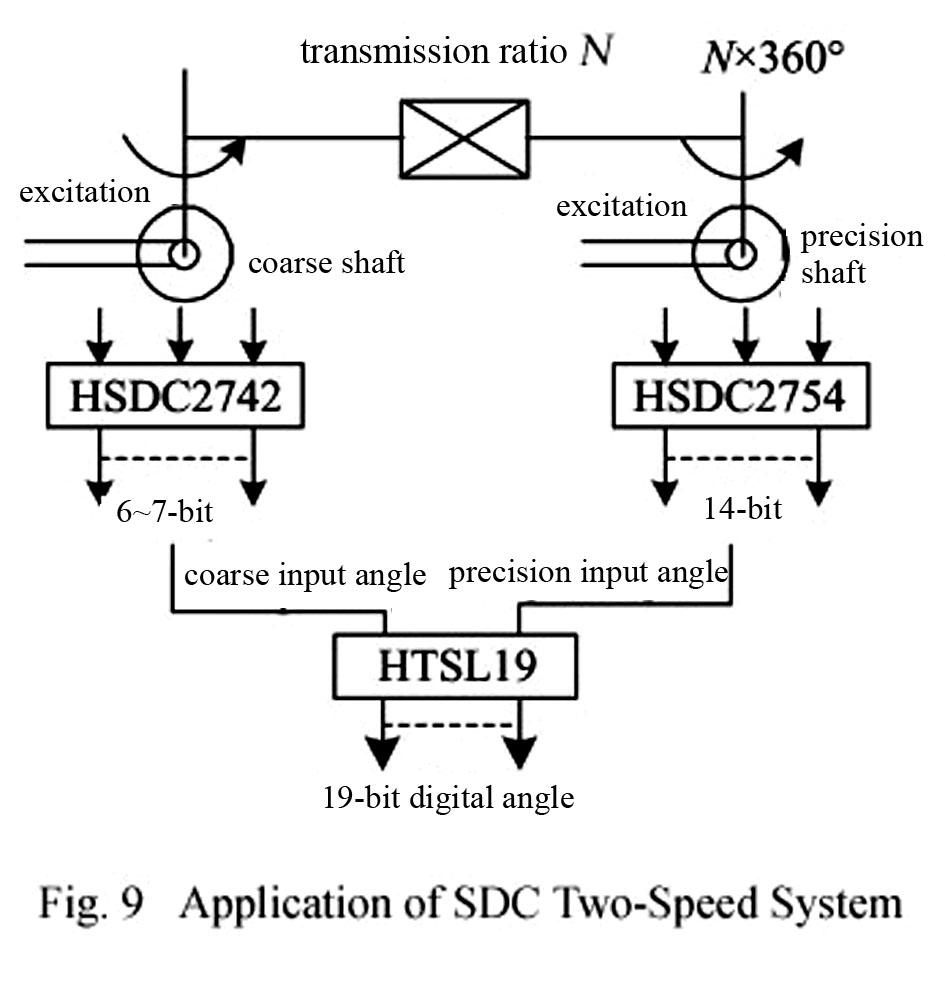The operating power adopts ±15V and + 5V DC power. There are two types of output signal: three-line synchro and reference signal (SDC converter) or four-line resolver and reference signal (RDC converter); the output adopts parallel digital codes of binary system.
| Resolution: 12 bits, 14 bits |
 |
| High tracking speed | |
| Hybrid integration, metal case | |
| Three-state latch output | |
| With velocity signal Vel output | |
| Indefinite compatibility with AD1740 series |
HSDC/HRDC27 series is the digital to synchro converters or resolver to digital converters for continuous tracking of type II servo loop, it parallelly latches and outputs 12-bit or 14-bit natural binary coded data with 32-line dual-in-line metal package, features the advantages of small volume, light weight and high reliability etc., it is widely applied in such automatic control system as Radar system, navigation system, etc.
The operating power adopts ±15V and + 5V DC power. There are two types of output signal: three-line synchro and reference signal (SDC converter) or four-line resolver and reference signal (RDC converter); the output adopts parallel digital codes of binary system.
Table 2 Rated conditions and recommended operating conditions
|
Absolute max. rated value |
Supply voltage Vs: ± 17.5V |
|
Logical voltage VL: +5.5V |
|
|
Storage temperature range: -55℃~+125℃ |
|
|
Recommended operating conditions |
Supply voltage Vs: ± 5V |
|
Logical voltage VL: 5V |
|
|
Effective value of reference voltage VRef: ±10% of nominal value |
|
|
Validity of signal voltage V1*: ±5% of nominal value |
|
|
Reference frequency f*: 50Hz~2.6kHz |
|
|
Operating temperature range TA: -40~+85℃,-55~+105℃ |
Note: * indicates it can be customized as per user’s requirement.








| Besides being directly used in precise measurement of rotational angle of the synchro or resolver, the shaft angle converter can also constitute two-speed measurement system or other digital measurement control system of higher precision. Fig.9 is an example of two-speed system composed of the converter. The two-speed system established on the principle of combination of coarse and precise measurement has a higher conversion precision, Fig.9 shows the two-speed conversion system composed of two synchros (or resolvers) coupled through the gearbox, two SDC converters and a two-speed processor HTSL19, its output reaches 19 bits. |
 |
| Bottom view | Front view |
 |
|
| Fig.10 Outside view of package | |
| Case model | Header | Header plating | Cover | Covering plating | Pin material | Pin plating | Sealing style | Notes |
| UP4529-32a | Kovar (4J29) | Au | Iron/ nickel alloy (4J42) | Au | Kovar (4J29) | Au | Matched seal | Plating of pin 23 is Au |




 X
X